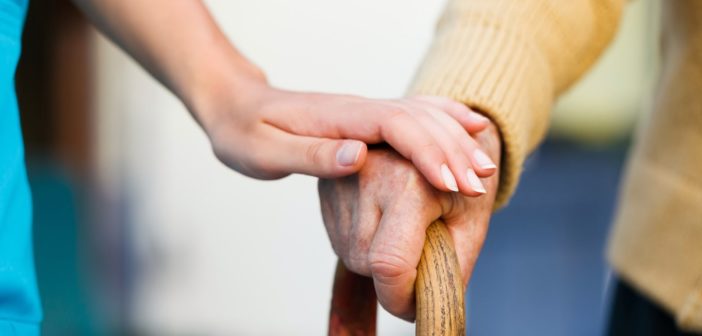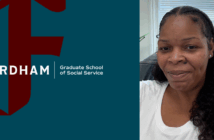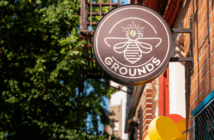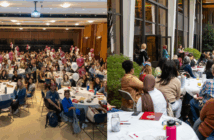 In June 2017, I started my first GSS internship at the Alzheimer’s Association Connecticut Chapter. I was invited to be part of the launching of their Diversity and Inclusion campaign in the Latin community. This role included hosting health fairs, educational programs, and Spanish and Portuguese caregivers support groups. Although a bit scared to be part of such an important program, I particularly recall a statistic, “Every 66 seconds one person is developing Alzheimer’s in the United States.” Even more astounding is that among this number, African-Americans and Latinos are one and a half times more likely to be affected by the disease in comparison to Caucasians. In contrast with those statistics were the barriers to treatment that I observed in the many interactions I had had with the Latin community. Many families still believe that the disease is just a normal part of aging and there isn’t anything that can be done about it. Often members of the community do not have a diagnosis until the most advanced stages of the disease. Moreover, affected communities are often completely unaware that the Alzheimer’s Association even exists.
In June 2017, I started my first GSS internship at the Alzheimer’s Association Connecticut Chapter. I was invited to be part of the launching of their Diversity and Inclusion campaign in the Latin community. This role included hosting health fairs, educational programs, and Spanish and Portuguese caregivers support groups. Although a bit scared to be part of such an important program, I particularly recall a statistic, “Every 66 seconds one person is developing Alzheimer’s in the United States.” Even more astounding is that among this number, African-Americans and Latinos are one and a half times more likely to be affected by the disease in comparison to Caucasians. In contrast with those statistics were the barriers to treatment that I observed in the many interactions I had had with the Latin community. Many families still believe that the disease is just a normal part of aging and there isn’t anything that can be done about it. Often members of the community do not have a diagnosis until the most advanced stages of the disease. Moreover, affected communities are often completely unaware that the Alzheimer’s Association even exists.
I suddenly found myself in a tough and challenging, situation. On one side were families in great need of assistance, and on the other side was the Alzheimer’s Association, with the precious ability to help all those families to navigate their struggles in dealing with this disease. All that was missing was the bridge to somehow connect those families with the Alzheimer’s Association. I began with what I know. I posted flyers in Spanish and English about the Alzheimer’s Association’s free services including their helpline number in laundromats, small grocery stores, libraries, restaurants, and doctor’s offices. I also stopped by the emergency room at Stamford Hospital, were I was successful in talking to the head nurse, and handed her several brochures in Spanish and English which she agreed to delivery to the social services department. Another major step was the opening of a pioneer Spanish speaking caregiver support group hosted by the Alzheimer’s Association CT, in partnership with River House Adult Day Center located in Cos Cob, Connecticut.

Pamela Orr
Although those strategies were good, they lacked the reach required. All efforts did not show up as numbers with regard to attendance. My Diversity and Inclusion outreach strategies felt to me like a failure. I had to “walk the walk,” and “talk the talk” passionately. I had reached out to many Hispanic organizations across the entire state of Connecticut offering our (free of charge) services and almost no one was interested in my outreach. It took the support of literally all my Fordham classmates, Professor Rachel Kammer (Field Work Seminar), Elaine Black (Generalist Practice I and II), and Shanon Jordan Alzheimer’s Association Southwestern Regional Director (Field Supervisor and Fordham GSS alumni) not to give up the process. I decided to step back from the practical efforts I had made, and apply myself to understand the true meaning of inclusion.
Inclusion should not only be about what one has to offer, but also about what others have to teach. The lesson I learned became even more clear when I attended the Alzheimer’s Association CT Diversity and Inclusion Board Meeting with representatives from other races, directed by Kristine Johnson. An example came at the end of the meeting when Amina Weiland from Hartford Healthcare (representing the Asian community) came to talk to me. She shared that she never had a successful outreach based on the model of caregivers support groups, where people share their experiences with other families in the community. Instead the success came when she started offering support groups for each family individually. Instantly, I realized that my eagerness to help was contradicting something way more important. I decided to rethink all the strategies I had carefully planned.
Instead of heading the outreach efforts based on the idea of, “I am here to include your community in my plans,” I humbly asked if I could be included in that community instead. It changed the way I saw everything. People want to be valued the way they are. They might not have all the information I have about the disease, but they sure know much more about their community and the way they support each other than I do.
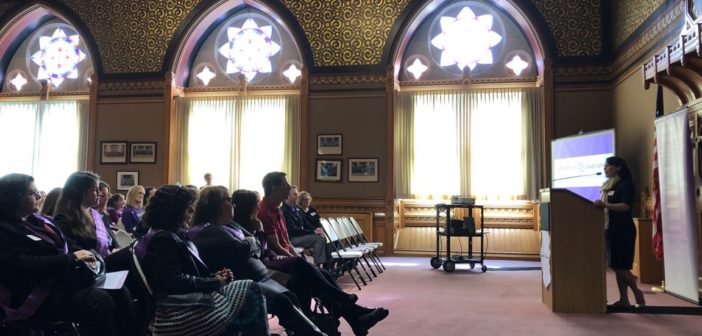
Pamela delivered a speech at the CT Capital (for Lobby Day) about the Alzheimer’s Diversity Outreach Project.
Last April I was invited by the Association Public Policy director, Christy Kovel, to speak at the State Capital for Lobbying Day. Months before that, I had no idea how to advocate for a cause. My internship experience gave me many opportunities to review the concept of diversity from a different angle, and to understand that inclusion is to learn as much as one teaches. At the end of each day, I remind myself that the cause I am working for is bigger and far more important than the failures I experience. I see failures as an opportunity to check if the place I was heading is still the place I want to go.
If you want to learn more about Alzheimer’s disease, visit the Association’s website at www.alz.org (English) or www.alz.org/espanol (Spanish).Their 24/7 helpline number is 1 800 272 3900.
